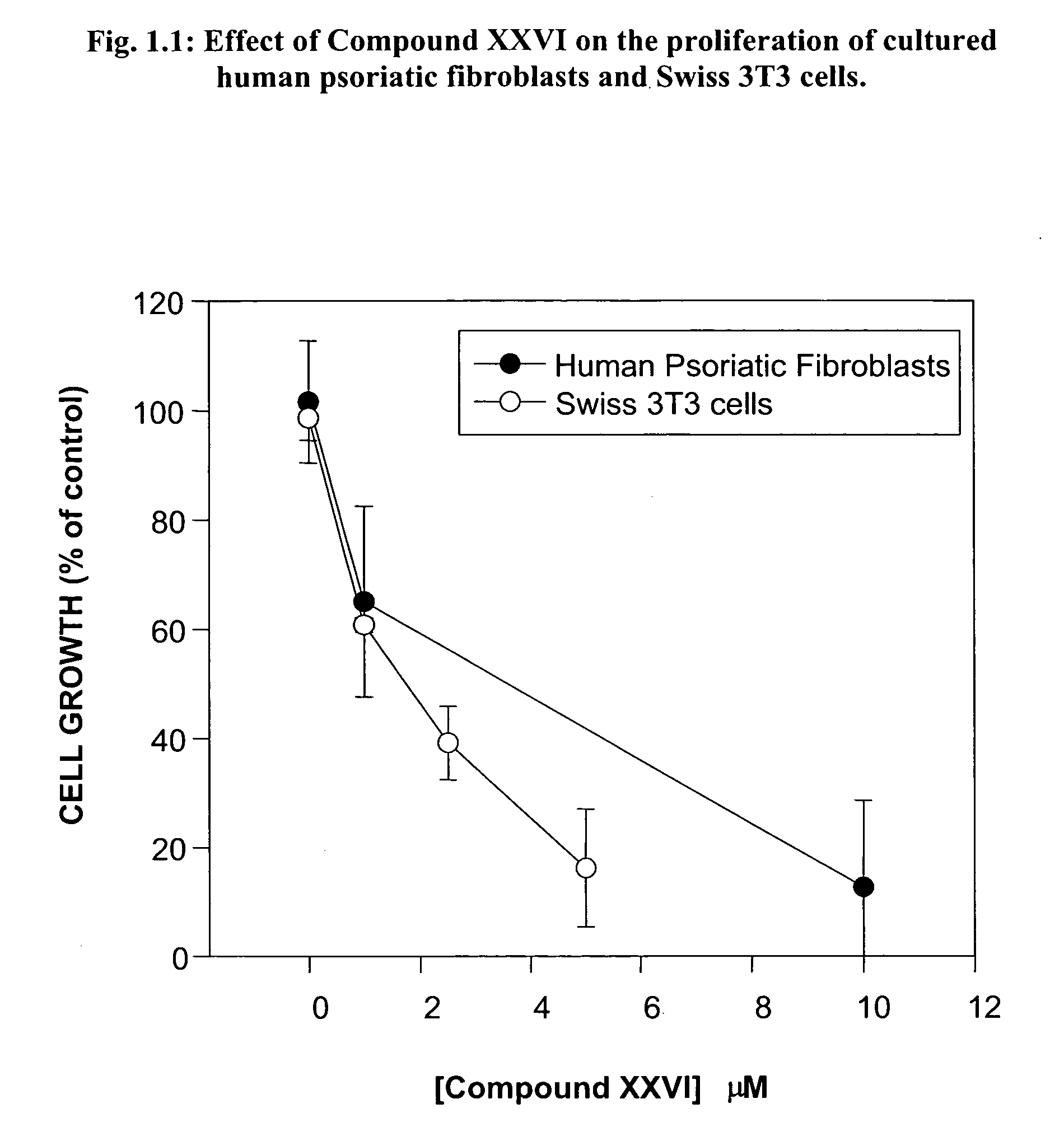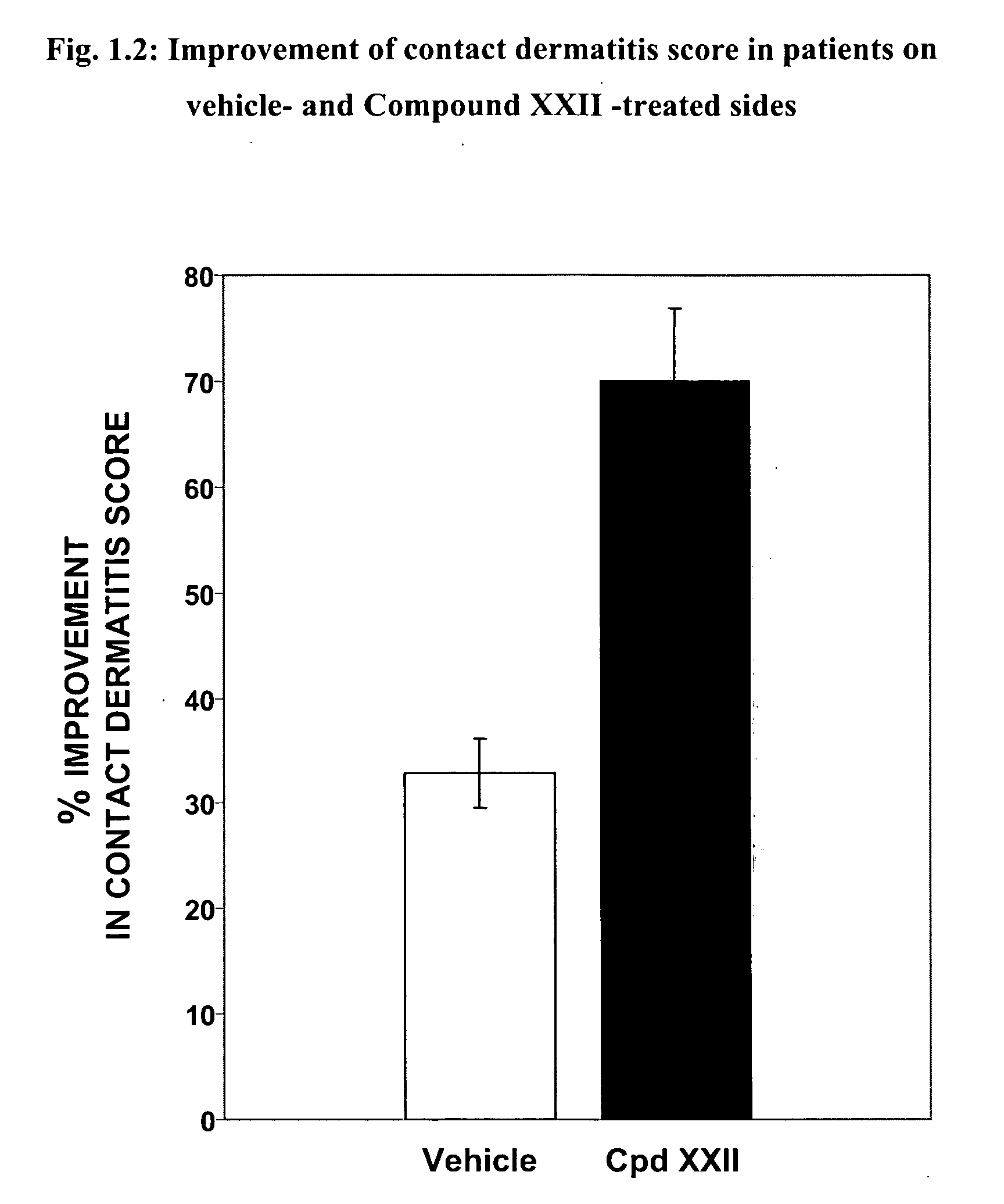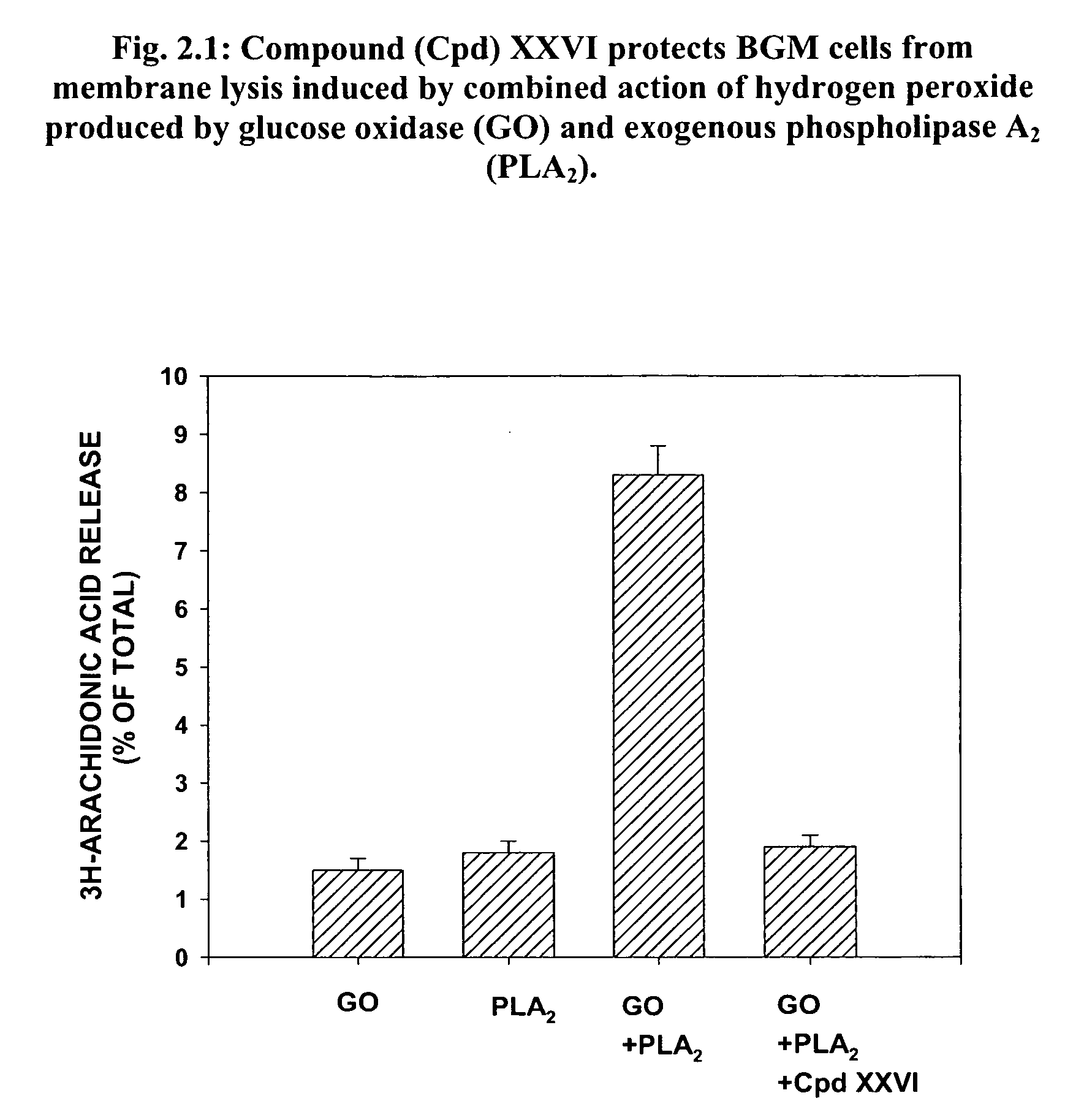Use of lipid conjugates in the treatment of disease
a technology of lipid conjugates and disease, applied in the field of disease treatment with lipid conjugates, can solve the problems of lichenification and pigmentation of the skin, accompanied by itching, and doctor visits, and achieve the effects of reducing the risk of lipid conjugate formation, and improving the effect of lipid conjuga
- Summary
- Abstract
- Description
- Claims
- Application Information
AI Technical Summary
Problems solved by technology
Method used
Image
Examples
example 1
Skin diseases, Contact Dermatitis and Psoriasis
[0379] Contact dermatitis is a widespread skin disease and is often attributed to a delayed type hypersensitivity response. Cutaneous, or skin, hypersensitivity reactions may occur in response to virtually any material and may present clinically in either acute or chronic forms. A widely-accepted system for invoking the delayed type hypersensitivity response is systemic sensitization to an antigen followed by its local application. Psoriasis is another common form of dermatitis marked by plaque-like formations, evident on extensor surfaces. As a hyperproliferative disorder of epithelial cells, drug therapies are typically examined in cell cultures obtained from sufferers of the condition.
[0380] Both secreted (sPLA) and cytosolic (cPLA) PLA2 have been identified in human skin. Their inflammatory roles have been determined in patients suffering from inflammatory skin diseases such as psoriasis, although some also play a role in maintain...
example 2
Anti-Oxidant Therapy
[0396] There is evidence that allergic and inflammatory skin diseases like atopic dermatitis, urticaria and psoriasis are mediated by oxidative stress, which damages cellular proteins, lipids, and DNA, leading to membrane dysfunction and instability. Conversely, patients with dermatitis may be more susceptible to oxidative stress because of damaged skin may function as a weakened barrier. The skin is particularly susceptible because it is exposed to endogenous and environmental pro-oxidant agents, leading to the harmful generation of reactive oxygen species (ROS). The noxious effect of ROS, such as peroxide free radicals, on living tissue is known as oxidative stress or damage.
[0397] In order to determine the effect of Lipid-conjugates on oxidative damage to proteins or cell membranes, tissue was exposed to hydrogen peroxide (H2O2) produced by (a) the enzyme glucose oxidase (GO) in the absence or presence of additional membrane destabilizing agents such as PLA2...
example 3
[0403] Hemolysis, which in one embodiment, is the breakdown of red blood cells (RBC), may be either a primary disease in itself, or a syndrome associated with another disease or physiological insult. In order to determine the effect of Lipid-conjugates on hemolysis, red blood cells were incubated in the presence of known membrane destabilizing agents and the release of hemoglobulin into the extracellular medium was detected.
[0404] Experiment 3.1 demonstrates that the Lipid-conjugates serve to maintain the stability of human red blood cells exposed to membrane-destroying agents. Human RBC were washed in saline and suspended in Hanks buffer (pH 7.4). Hemolysis was induced in the absence or presence of 10 μM Lipid-conjugates by treatment with either 5 U / mi streptolysin O (SLO), 25 U / ml streptolysin S (SLS), or 5 μg / ml lysophosphatidylcholine (lyso-PC) for 20 min. The cell membranes were spun and the hemoglobin content in the supernatant was determined by measuring the O.D. a...
PUM
| Property | Measurement | Unit |
|---|---|---|
| Molar density | aaaaa | aaaaa |
| Fraction | aaaaa | aaaaa |
| Fraction | aaaaa | aaaaa |
Abstract
Description
Claims
Application Information
 Login to View More
Login to View More - R&D
- Intellectual Property
- Life Sciences
- Materials
- Tech Scout
- Unparalleled Data Quality
- Higher Quality Content
- 60% Fewer Hallucinations
Browse by: Latest US Patents, China's latest patents, Technical Efficacy Thesaurus, Application Domain, Technology Topic, Popular Technical Reports.
© 2025 PatSnap. All rights reserved.Legal|Privacy policy|Modern Slavery Act Transparency Statement|Sitemap|About US| Contact US: help@patsnap.com



